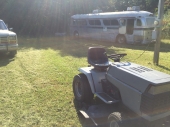
 1
1




 2
2




 5
5




To be is to do …Kant
To do is to be ..Nietzsche
Do be do be do…Sinatra
Scooby dooby do …St. Thomas




John Daley Bendigo, Australia The Enemy of progress is the hope of a perfect plan
Benefits of rainfall collection https://permies.com/t/88043/benefits-rainfall-collection
GOOD DEBT/ BAD DEBT https://permies.com/t/179218/mortgages-good-debt-bad-debt
 5
5




“It’s said war—war never changes. Men do, through the roads they walk. And this road—has reached its end.”
 3
3




 3
3




I make a Maple Syrup instructional movie! Check it out HERE
SKIP books, get 'em while they're hot!!! Skills to Inherit Property
See me in a movie building a massive wood staircase:Low Tech Lab Movie




To be is to do …Kant
To do is to be ..Nietzsche
Do be do be do…Sinatra
Scooby dooby do …St. Thomas




 1
1








Fish heads fish heads roly poly fish heads




Fish heads fish heads roly poly fish heads

 2
2




“It’s said war—war never changes. Men do, through the roads they walk. And this road—has reached its end.”
 6
6




Mike Haasl wrote:I suspect our ancestors used green lumber only for short term log cabins and used logs/lumber aged a bit longer for their more permanent structures. But that's primarily a guess based on watching one youtube video.
What style of construction would you be pursuing? Log cabin style? Stick built?
I do believe board and batten siding was designed to be used with green wood and it handles the shrinkage. But that's just the exterior skin of the building...
 4
4




 8
8









